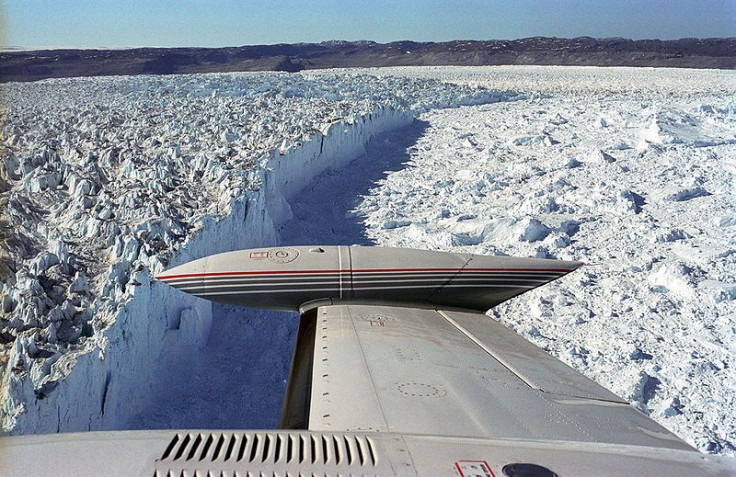Jakobshavn Glacier Reaches ‘Unusually High Speeds’ In Greenland, Fastest Ice Floe Moves 10 Miles Each Year

A glacier in Greenland is on the move – and it may be contributing more to global sea level rise than any other feature in the Northern Hemisphere.
The Jakobshavn Glacier, which is believed to have been the source of the iceberg that sank the Titanic in 1912, was recorded moving at roughly 10 miles per year – the fastest speed ever recorded. The findings, published in the journal The Cryosphere, describe how the speedup of the glacier contributes to a rising global sea level.
“We know that from 2000 to 2010 this glacier alone increased sea level by about 1 mm. With the additional speed, it likely will contribute a bit more than this over the next decade,” Ian Joughin, a researcher at the Polar Science Center at the University of Washington and lead author of the study, said in a statement.
The glacier movement, which was recorded at more than 150 feet per day, was a shocking revelation for researchers.
"We've been watching it for over a decade now, so it was quite a surprise when it popped up in 2012 with these unusually high speeds," Joughin told LiveScience.
Since the glacier flows more slowly during the winter months, its unprecedented speed was temporary, researchers note. However, its speed is up to 30 to 50 percent greater than previous summers.
“We are now seeing summer speeds more than four times what they were in the 1990s on a glacier which at that time was believed to be one of the fastest, if not the fastest, glacier in Greenland,” Joughin said.
Joughin says the glacier’s speed can be blamed on a deep valley beneath the ice sheet. In 2012, a massive surface melt caused the Jakobshavn Glacier to pick up speed. This trend could pick up over the next decade, Joughin adds.
The Jakobshavn Glacier drains into a deep ocean fjord off the coast of Greenland. Where the glacier ends, at its calving front, it breaks into icebergs that eventually float out into the ocean and melt. As the Artic temperatures warm, the glacier begins to thin and retreat.
“As the glacier’s calving front retreats into deeper regions, it loses ice – the ice in front that is holding back the flow – causing it to speed up,” Joughin said.
The team clocked the glaciers’ speed using data taken from German Space Agency’s (DLR) TerraSAR-X satellites. “As the glacier moves we can track changes between images to produce maps of the ice flow velocity,” Joughin said.
Researchers predict the retreat will end by the end of this century when the glaciers’ calving front meets the head of the deep valley, about 31 miles from where it is today.
© Copyright IBTimes 2024. All rights reserved.






















